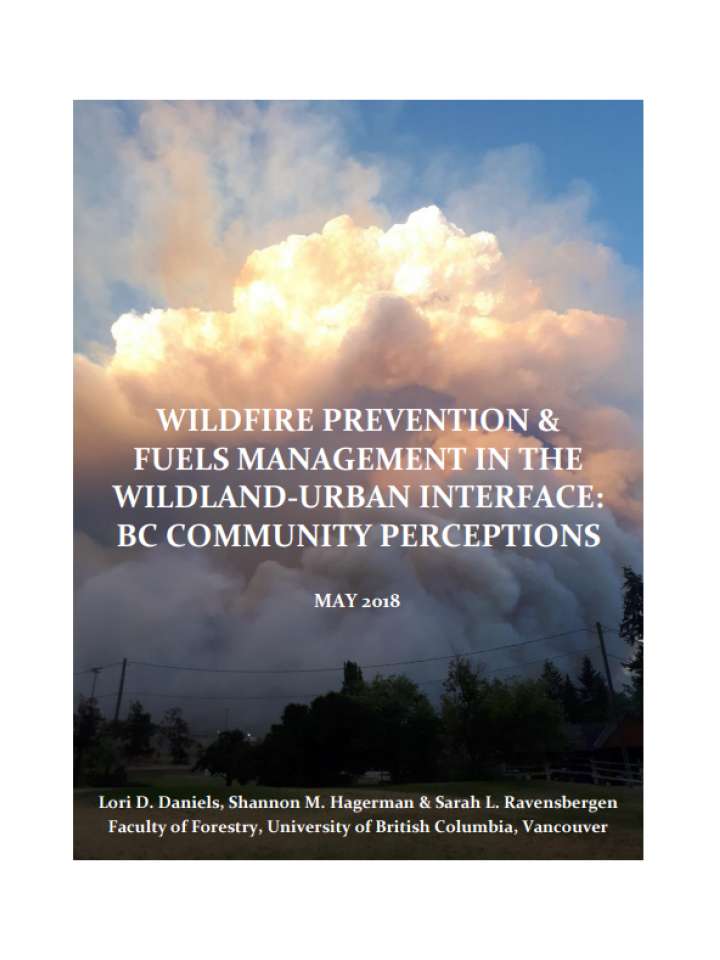Wildfire prevention and fuels management in the wildland-urban interface: BC community perceptions
This report summarizes results from a web-based survey of communities in British Columbia (BC), conducted in 2016-7 by researchers in the Faculty of Forestry at the University of British Columbia. The survey aimed to better understand the views of municipalities, regional districts, First Nations communities, and reserves, regarding plans and actions toward wildfire prevention.
Although many eligible communities can apply for funds at the Strategic Wildfire Prevention Initiative (SWPI) to develop and implement community wildfire protection plans (CWPP), only 11,679 hectares of forest have been treated at a cost of $78 million between 2005 and 2017. Most communities in the province remain vulnerable to wildfire despite efforts over the past decade to inform communities and engage them in mitigation.
Findings show that
- communities throughout BC are aware of and very concerned about current and future threats from wildfire in the wildland-urban interface (WUI).
- There is consensus that all agencies - municipal, regional, provincial, federal, and First Nations governments, industry and business, and individual homeowners - should be doing more to reduce wildfire risk.
- Nevertheless, not all communities have developed a wildfire protection plan. Barriers are greatest for communities with fewer than 5000 citizens and many First Nations communities, where engagement may be enhanced if issues of sustained funding, capacity and support are adequately addressed.
- Solutions to enable community action should prioritize the most vulnerable communities and must account for cultural differences.
Explore further
